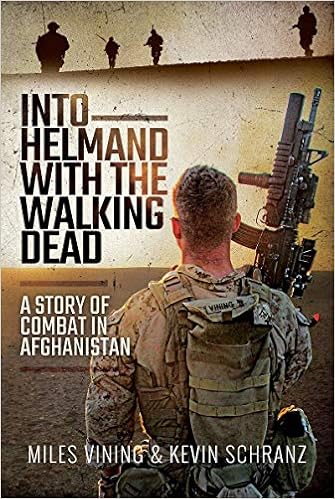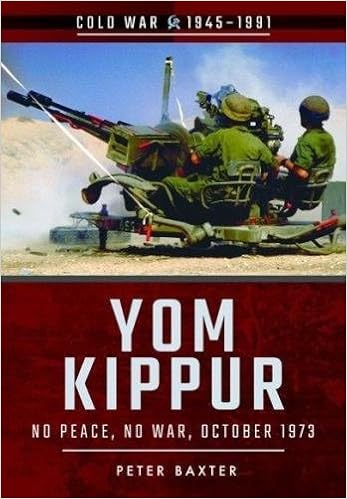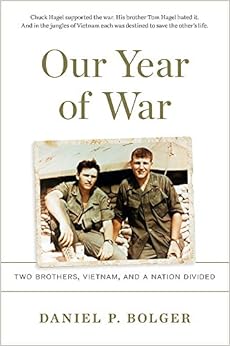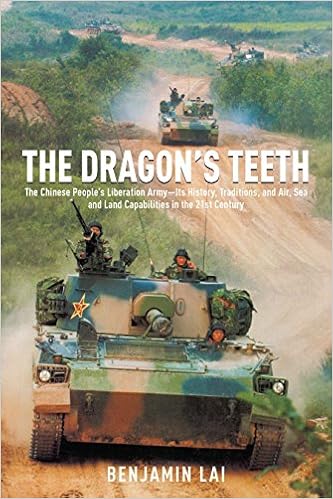The Contemporary Operational Environment of Afghanistan
By MSG James F. Seifert
| The Contemporary Operational Environment of Afghanistan |
"Therefore, just as water retains no constant shape, so in warfare, there are no constant conditions" (Tzu, 2000, p.23). Afghanistan is a unique country that holds all terrain, from flat deserts to arduous mountain ranges. The country is sparse, with large cities and infrastructure compared to the westernized neighboring regions. The United States (US) military, along with North Atlantic Treaty Organization (NATO) partners and allies, had occupied Afghanistan for over 20 years in the War on Terrorism. Though superior in tactics, weaponry, and personnel strength, the militaries fell victim to relentless adversaries in the region. Primitive means, with the adaptation of modernized weaponry, proved to either match or some instances, overpower the might of friendly forces.
The traditional means of war with a near-peer threat did not exist as the enemy did not identify under uniforms and traditional combatant identity. For instance, the enemy identified as a farmer or shopkeeper during the day and night as a lethal force. The battlefield continually changed as time passed, as did the engagements and maneuverability of friendly forces. The US military's challenges presented by the contemporary operational environment (COE) of Afghanistan negatively affected the military's ability to fight in future large scale combat operations (LSCO).
| Understanding The Contemporary Operational Environment |
The COE represents the current or present environment and the projected future (Strategy Page, n.d.). Many elements design and shape the COE, such as conventional, non-conventional, regular, and irregular warfare. One of the profound elements that affect the COE is the actions of non-state and non-nation actors. Additionally, the article identifies the COE as a set of conditions, influences, and circumstances, meaning the environment would continue to change and evolve based on actions and reactions within the environment. For instance, no battlefield or adversary is precisely like the other, nor do similar enemies fight or have the same capabilities. Opposing forces and geographic analysis come from a simpler operational environment (OE) tool that staff uses to evaluate called the operational variables, political, military, economic, social, information, infrastructure, physical environment, and time (PMESII-PT) (Department of the Army [DA], 2022). Additionally, the OE has a set of mission variables, mission, enemy, terrain and weather, troops, time, and civil considerations (METT-TC) that assist commanders in understanding the environment and its adversaries based on their mission set (DA, 2022). PMESII-PT and METT-TC are not the only tools to assess the OE. They also serve as the primary tools utilized at the tactical level so commanders can employ their forces accordingly.
Looking into Afghanistan's COE along with some analysis from the OE, analysis early in the war proved irrelevant. It did not provide explicit details regarding enemy forces and the cultural aspects that affect a conventional force's occupation in the theater (Conner, 2005). For instance, US forces encountered multiple dynamics regarding conventional and unconventional warfare and did not have prior training for those types of fights. The US Army is a conventional force, meaning that they mainly attack and train for a near-peered adversary and matches with similar structure, design, and tactics (Strategy Page, n.d.). However, a conventional fight was not the COE of Afghanistan provided. Afghanistan provided conventional forces with a new look to the fight where the local police, farmer, or shopkeeper did the job by day and served as a spy or became a fierce fighter by nightfall. Additionally, US forces would only see where the enemy was coming from if the adversaries in Afghanistan fought mainly as small teams through many networks. Understanding the complex COE of Afghanistan leads to the more profound challenges the US military faced in and out of the country.
| Challenges |
In a two-decade-long war, the US military transformed and adapted to their environment, but it did not come without some trial and error. Since the military was not fighting a uniformed adversary, the senior leaders had to adapt to the OE and devise their escalation of force (EOF) measures and positive identification (PID) of combatants or non-combatants. The COE of Afghanistan did not allow for a conventional fight, so the Army adopted mission command. Mission command allows subordinates to make timely decisions and execute missions from a decentralized standpoint (DA, 2019b). For example, mission command provided leaders at the echelon to focus on their battlespace and execute missions based on the orders and the commander's intent and end state without constantly communicating with higher for guidance.
"Never tell people how to do things. Tell them what to do, and they will surprise you with their ingenuity" (DA, 2019b, pp. 1-3). Afghanistan was not a conventional war where companies and battalions got in line and charged forward to enemy positions. The US military would experience decentralized operations in the country, to the extent that the separation of platoons and companies was over 100s of kilometers, operating in their battlespace. Sometimes, the only way higher commands could reach a platoon is by helicopter. Based on the Army's structure of systems and processes makes them a centralized operating force. However, mission command works on the premise that war and conflict are full of chaos and unknowns, thus the importance of empowering subordinate leaders and Soldiers to execute without direct orders (DA, 2019b). Understanding mission command requires dynamic leaders and leadership to operate and conduct training to develop subordinate leaders.
Leadership
The Army defines leadership as providing purpose, direction, and motivation to Soldiers and formations to conduct operations in garrison and combat (DA, 2019a). Leadership evolution in Soldiers emerged with the COE. Leaders and, in some instances, junior Soldiers would find themselves in positions of great responsibility based on combat losses or the nature of the mission. DA (2019a) states that the best leaders do not fixate on the black-and-white orders but can remain flexible to the changes as the missions evolve or the situation changes. Leaders and Soldiers must remain adaptive; otherwise, catastrophic consequences can occur. For example, executing leadership in Afghanistan vastly differed from conventional wars regarding the amount of ownership or responsibility junior leaders had. Staff Sergeants, with a 12-man squad, in some cases, operated separately from the main element and maintained responsibility for calling in fire missions, medical assistance, and conducting reconnaissance. Any single point of failure during those operations would result in catastrophic disaster. For example, despite the prestigious Special Operations Forces' (SOF) highly advanced training and equipment, their operations sometimes fail. Leadership constantly evolves as time passes, and there is no one-size-fits-all solution to leadership. Part of being a leader and providing leadership is accomplishing the mission with what units have rather than what units wish they had. The modernization of the Army and its capabilities takes a long time, which leaders must acknowledge.
Modernization
The modernization of the Army comes from the line of effort (LOE) #2. Its design ensures that the force receives the latest technologies and doctrine advances to overcome adversaries the Army encounters (Milley & Esper, 2018). Additionally, the Army Strategy drives the Army Modernization Strategy facilitating how the Army receives new equipment and capabilities to remain compliant with the partners and allies in the Joint Force (McConville et al., 2019). While the Army engaged in the War on terror, modernization efforts mainly addressed the current fight in Afghanistan and other middle eastern theaters. The focus on protecting the force has always been at the forefront of developers and leaders. Some of the developments that came were upgrades to the tactical vehicles to withstand bomb blasts, night vision equipment, communications platforms, and the necessity to make all current fielded items lighter for the Soldiers operating in arduous terrain over great distances.
The inherent challenge faced in the Army's modernization during the war is looking at the adversary's developments and maintaining pace with the future enemy, not just the current enemy. The realization of the Army needing to refocus on near-peer threats came in the modernization framework, driving all training to focus on multi-domain operations (MDO), realigning forces in theater-specific areas, and ensuring the training of leaders and Soldiers to defeat the enemy (McConville et al., 2019). Though the challenges of Afghanistan presented unique skillsets, technological advances, and rapid equipment developments for the US military's leaders and Soldiers, it did not outweigh the impacts on the military's ability to fight in LSCO.
| Impacts on Future Large-scale Combat Operations |
During the War on Terror, the US military focused on training techniques, tactics, and procedures (TTP) for the unconventional fight before transitioning later in the war to LSCO. The US mainly focused its attention on limited contingency operations (LCO) to engage in counterinsurgency (COIN) and stability operations (Burket, 2019). For example, the training scenarios within the combat training centers (CTC) focused rotational training units (RTU) on the specific theater of operations the unit was going to deploy. However, while the US military engaged in their fight, the adversaries of China, Russia, and North Korea closely followed the advancements and tactics to advance further their technologies and tactics (Burket, 2019).
Burket (2019) outlines conditions characterizing LSCO operations as both sides will strive for the initiative through high-tempo operations. The US will not begin operations in favorable conditions against a near-peer threat (Burket, 2019). Additionally, the transition of the battalion and below fight to brigades and divisions fight, and the engagements with adversaries shared by both US and international partners. The Army Strategy has an LOE that supports the development of personnel and equipment to support the transition to LSCO, specifically, LOE #4 strengthening alliances and partners (Milley & Esper, 2018). One of the other critical factors in LSCO is the chaos and chaotic situation the military will have to endure (Burket, 2019). Leaders and staff must understand the principles of war to plan and conduct successful operations (DA, 2022).
Principles of War
There are nine elements in the principles of war, maneuver, objective, offensive, surprise, the economy of force, mass, unity of command, security, and simplicity (DA, 2022). The principles of war serve as a guide for planners and commanders to use in operations, not a check-the-block list of items that staff must execute. Additionally, DA (2022) states that the principles focus on how commanders and staff engage forces in combat operations. The principles of war have remained the same, dating back to post-World War I (WWI), and apply to every scenario or situation, but not in great detail, and the basis for depth depends upon the mission set (DA, 2022). For example, stability operations probably do not need massing, surprise, or offensive elements considerations. However, those elements apply to conducting offensive operations. With the War on Terror, commanders and staff utilized all they had to execute operations and manage the force structure of units.
Force Structure and Management
Throughout the war fighting in counterinsurgency, the Army has made some structural changes to their formations to provide the most agile units to suppress the current threat utilizing the How the Army Runs Handbook (US Army War College [USAWC], 2022). The current construct is again under revision to prepare for LSCO against a near-peer threat and the potential environment that the Army may deploy using a penetration, heavy, light, joint forcible entry airborne and joint forcible entry air assault (Matsuyama, 2022). Additionally, the change rapidly responds to the transition from COIN to LSCO and recreating the division as a tactical unit of action instead of an administrative function during the War on Terror. Though these structural changes aid in the new potential fighting environments, the Army still needs to train under the new constructs developing the TTPs that assist units in mission accomplishment. Senior Army officials aim to have a fully integrated and trained force capable of deploying in any OE by 2035 (McConville et al., 2019).
The Army of 2035
The Army of 2035 concept is an overall thought process based on the goals and concepts within the strategy. The perceived shortfalls in accomplishing the single theater concept are the modernization efforts and adversaries' current state and actions. The Next Generation Squad Weapons (NGSW) program is a single point for development. The modernization effort by Sig Sauer to create new weapons has delayed past a year for the fielding of the first units (Department of the Army [DA], n.d). Based on the delays already incurred, the program affects Soldier's ability to familiarize themselves, train, and logistically supply the weapons.
Another point to examine is the recent air threat over the US from China's spy balloon (Yilek, 2023). Given the time it takes for developments and testing, 2035 may be too far out, and leaders may want to redraw the timeline so units can prepare for combat sooner than expected. Along with the changes in modernization, the military has revamped its involvement with international counterparts and developed interoperability between nations.
Interoperability
In the Army Strategy, interoperability is at the forefront of language to the Army in LOE #4, discussing achieving success in security cooperation and assistance (Milley & Esper, 2018). During the Afghanistan conflicts, the US military maintained the lead in the efforts on terror, but rarely were offensive operations conducted with international partners and allies alongside US personnel. The current strategy has thus shifted focus back to heavy integration of foreign forces during training events in the European region primarily. The National Defense Strategy (NDS) punctuates the necessity for US integration with international partners and allies regarding training, funding, and equipping (US Department of Defense [DOD], 2022). For example, in the Joint Multinational Readiness Center (JMRC), many of the RTU training rotations consist of allied forces either in charge of US forces or provided as an additional maneuver element for US commands. Many rotations experience many challenges in doctrine and operation capabilities that hinder the ability of the coalition to seize and maintain the initiative.
| Conclusion |
The difficulties that the COE in Afghanistan brought to the US military impacted the service's capacity significantly to engage in large scale combat operations in the future. Over the past four years, the US transitioned to near-peer training and realizing issues up front with their ability to close with and destroy the enemy. Most leaders in today's Army, who only served in the War on Terror, have recently trained in the near-peer fight at their respective training centers. The challenges of leadership growth in the war's early stages created versatile leaders who could devise ingenious plans. Those ingenious plans came from utilizing operational and mission variables, enabling the commanders and staff to make informed decisions and plans for their formations to execute.
Mission command has allowed leaders to adapt to current situations and provide real-time feedback to higher echelons to execute the necessary planning for mission success. With the coming changes in force structure, the US military must quickly adapt to the new fighting concept under their division alignment and work with their international counterparts to gain a competitive edge against adversaries. The Army's ability to modernize fast enough remains a challenge and could impact the ability to close with and destroy the enemy. The adversaries utilized the time the US spent in the middle east to learn, train, and develop their armies. The principles of war provide commanders and staff with the specificity needed to achieve mission success. The commanders and staff use the principles to apply the proper amount of force, apply the appropriate maneuvers, establish the most effective chain of command, and ensure that the plans are simple enough for the lowest-ranking Soldier to understand to accomplish the mission.
| * * * |
Show Notes
| * * * |
© 2025 By James F. Seifert Jr.
Published online: 05/07/2023.
Written by James F. Seifert Jr.
About the author:
James F. Seifert Jr. is a student at the Sergeants Major Academy Class 73. He's an Active Duty Army Master Sergeant with 19 ½ years of service and a career Infantryman, having served with Airborne and Stryker Units. Reason for publishing: Gaining experience in the doctrine of mission command and analyzing a battle broadened my approach to seeing insights of our commands and how the enlisted force is an essential part of commanders ability to exercise command. Non-Commissioned Officers (NCOs) tend to not understand the finer details of the why or how decisions are made or how they, as soldiers, can contribute to commanders. In breaking down mission command, a unique understanding and perspective unfolded.
* Views expressed by contributors are their own and do not necessarily represent those of MilitaryHistoryOnline.com.







